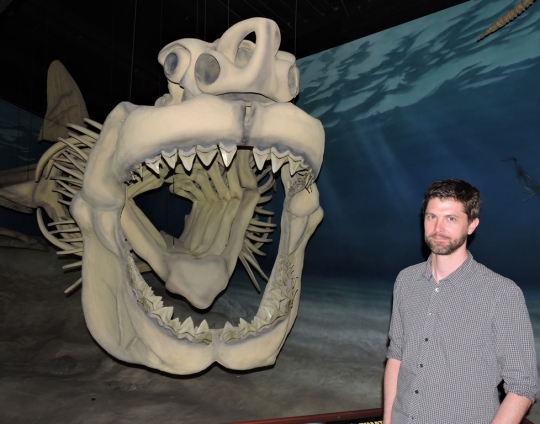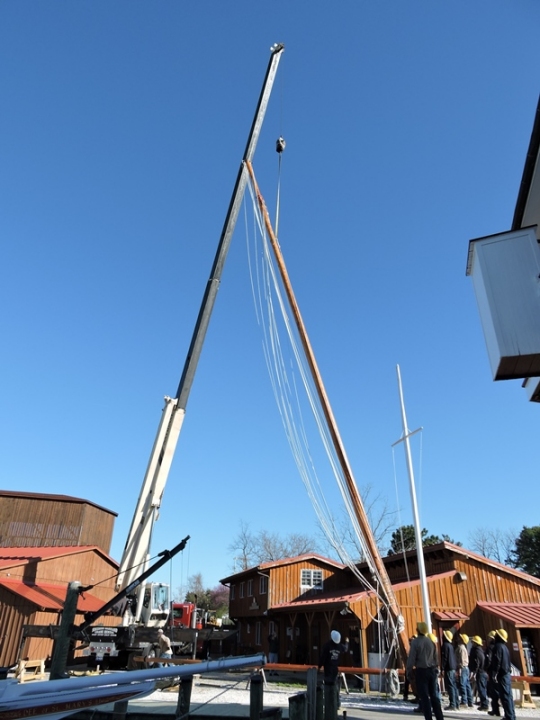 Kalmar Nyckel is a faithful re-creation of the Dutch-built armed merchant ship that brought Swedish settlers to North America in 1638, to what has become Wilmington, Delaware.
Kalmar Nyckel is a faithful re-creation of the Dutch-built armed merchant ship that brought Swedish settlers to North America in 1638, to what has become Wilmington, Delaware.Come Aboard: Kalmar Nyckel Sets Sail in Solomons
In association with the Calvert Marine Museum, the Kalmar Nyckel will continue her 2016 public sailing season in Solomons Island from June 17th through June 19th, offering day sails and deck tours.
Kalmar Nyckel is a faithful re-creation of the Dutch-built armed merchant ship that brought Swedish settlers to North America in 1638, to what has become Wilmington, Delaware. Measuring 141 feet long with a 25 foot beam, she will travel roughly 3,000 nautical miles this season.
The ship will be docked at Watermans Wharf, located at the end of Williams Street in Solomons. In addition to guided tours of the ship, passengers of "day sails" are afforded the option to work alongside the crew, hauling lines and raising sails, as well as simply enjoy the views. Spirited "Pirate Sails" are also available, where the ship is transformed into a pirate vessel, complete with costumes, scavenger hunts and pirate tales.
For tickets and more information about specific times and events, visit www.kalmarnyckel.org or contact the Kalmar Nyckel Foundation office at (302) 429-7447. Online tickets can be purchased by visiting www.kalmarnyckel.org/BookASail.asp.
On Thursday, June 16, children are invited to climb aboard the Kalmar Nyckel and experience what life on a tall ship was like in 1638. Tours are at 1:00 p.m. and 2:00 p.m. Tickets are $5 per person and available by calling 302-429-7447.
The Kalmar Nyckel Foundation is appreciative of the support of the Calvert Marine Museum and the Calvert County Waterman's Association, and are looking forward to working with them again.
Belgian Paleontologist Visits the Calvert Marine Museum
 Dr. Olivier Lambert pictured with Megalodon.
Dr. Olivier Lambert pictured with Megalodon.Dr. Olivier Lambert, a well-known Vertebrate Paleontologist, visited the Calvert Marine Museum to collaborate with CMM staff paleontologist Dr. Stephen Godfrey on several fossil dolphin-related research projects, in addition to sharing his fossil-collecting expedition experiences in the Peruvian desert.
Dr. Lambert, currently at the Royal Belgian Institute of Natural Sciences in Brussels, Belgium is an expert in the evolution of marine mammals. He studies their adaptations to aquatic life, past diversity, and geographic distribution. His research focuses on toothed, beaked, and baleen whales, along with several species of dolphins from the North Sea, southeastern Pacific, both coasts of the United States, Central Paratethys, and South Africa.
He works closely with American, Dutch, French, Italian, and Peruvian colleagues. The collaboration with Dr. Godfrey began in 2002 when they first met at the Smithsonian Institution in Washington, D.C. Drs. Lambert and Godfrey are presently describing a fossilized dolphin skull from Calvert Cliffs of an ancient relative of the modern-day Ganges River Dolphin (presently found in freshwater rivers in Pakistan, India, Bangladesh, and Nepal). They are also studying an even older skull (on loan from the Smithsonian) from the State of Oregon that is ancestral to the squid-eating and very deep-diving beaked whales.
Dr. Lambert's work on many new kinds of extinct dolphins from Peru is an asset when comparing the extinct kinds of dolphins found along Calvert Cliffs with those from other fossil-rich locality around the world.
Re-Stepping of the Dee Of St. Mary's Mast
 SMECO and Southern Maryland Crane Rental assisted with removing the Dee's mast. (Photo compliments Robert Hurry)
SMECO and Southern Maryland Crane Rental assisted with removing the Dee's mast. (Photo compliments Robert Hurry)The Dee of St. Mary's mast was re-stepped (re-installed) thanks to the collective teamwork of many people and local businesses. Because a large crane was necessary to lift the 76-foot-mast, the Calvert Marine Museum reached out to SMECO for help. SMECO enlisted the assistance of Southern Maryland Crane Rental, Inc. and their contribution made this re-stepping possible. Hours of tender loving care from the Patuxent Small Craft Guild, Dee captains, and crew members over the winter have this historic skipjack another step closer to raising sail for the 2016 season.
While safety compliant Coast Guard inspections are conducted yearly, pulling the Dee's mast out for a physical inspection is only done every 10 years. Work began back in November when SMECO and Southern Maryland Crane Rental assisted with removing the Dee's mast. The Patuxent Small Craft Guild members, Dee of St. Mary's captains and crew members worked diligently over the winter to clean and refinish the wood, and replace most of the rigging and the hardware. Their work also included repair and refinishing of the boom.
The Dee of St. Mary's was commissioned and built in 1979 in Piney Point, Maryland. Originally used as a commercial oyster fishing boat for 10 years, she is now a floating classroom educating children about the history of the Chesapeake Bay. Public sails aboard the Dee begin in May and will go throughout the summer; public charters are available.


